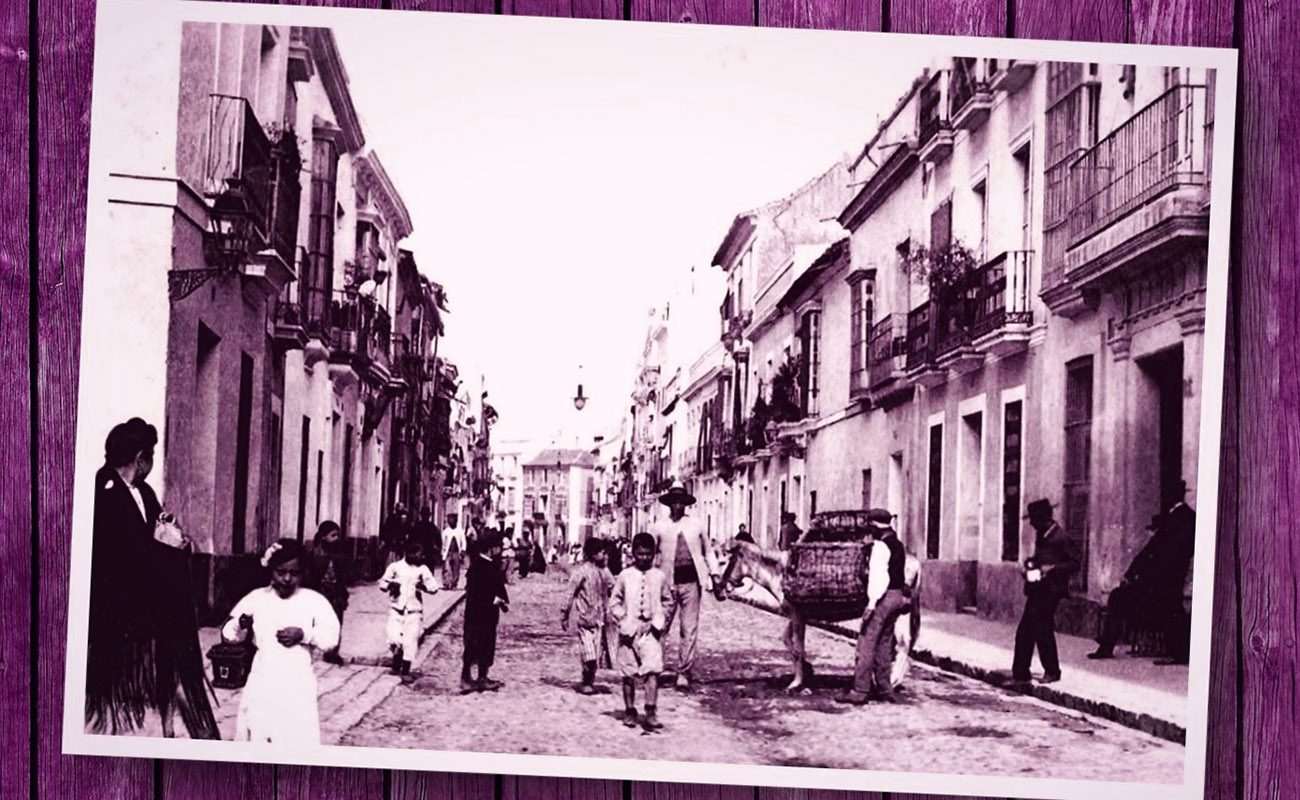Grandpa and homemade flamenco
They were cantaorers such as Juan Talega, Perrate and his sister María, La Perrata. Later on they started performing on stages, but anyone who wanted to enjoy the true quality and flavor of their cante had to go to Utrera and be in a private party with them. Virtually all of today’s flamenco stars have experienced this homemade flamenco.

-Grandpa, what is homemade flamenco? I heard Antonio Mairena talk about this in a presentation he gave at the Peña Niño Ricardo, two or three years before he died.
-Oh yes, don Antonio often talked about homemade flamenco, which is the one performed at home, in parties, improvised, with no artistic planning.
-Isn’t there homemade flamenco any more?
-Sure there is. If you go to Utrera, Lebrija or Jerez, you’ll see it’s performed there, although it’s becoming increasingly rare. I remember when in Triana, the Cava(1) gypsies got together at their homes. Each house had a unique flamenco style. You could see Pepa La Calzona and El Pati dancing, or El Titi and Tragapanes singing, it was wonderful. Just image how it would have been in the 1800s, in the houses of the Cagancho, Puya and Pelao families…
-You mention the Puya family. Who was Curro Puya?
-Actually, I like this question. Nobody knows who was Curro Puya of Triana yet, although it’s a common name. We’re concerned with the singer, the great cantaor of tonás, seguiriyas and soleares. He was the grittiest gypsy in Cava. He was a blacksmith, an artist of the forge. He was born in the second half of the XIX century, in Triana, and he died a very old man. Quite a story, Curro Puya’s.
-Yes but, who was him? No one has ever written his biography.
-The trouble is that people have been looking for one Francisco Vega, but his name wasn’t Franscisco(2). They called him “Curro Puya” because it was a family nickname. The same happened with “Curro Frijones”, as none of the Frijones in Jerez (there were two of them) was named Francisco, but they were named Antonio and Manuel instead. “Curro Frijones” was a character in an old comedy play, a very scruffy character, that’s why people called Frijones “Curro Frijones”. Same with Pinini de Utrera (grandfather of Fernanda and Bernarda), who got that nickname after a famous comedy play, Uncle Pinini. An old bullfighter of Huelva was also called Curro Frijones, as attested by bullfighting poster of that time.
-OK, grandpa. So, how meaningful is this homemade flamenco?
-Very meaningful, Manolillo. The most authentic cante is homemade, or at least part of it is, because some palos are derived from folklore or musicals who were already being performed in theatres in the XVIII century, with piano or with other instruments, even before guitars were used. Flamenco originates from the fusion of homemade cante and the rich Andalusian music culture. Flamenco’s baile, for example, would not exist without the early influence of bolero(3) dance.
-Who were those cantaores and cantaoras of homemade flamenco?
-Well, they were cantaorers such as Juan Talega, Perrate and his sister María, La Perrata. Later on they started performing on stages, but anyone who wanted to enjoy the true quality and flavor of their cante had to go to Utrera and be in a private party with them. Virtually all of today’s flamenco stars have experienced this homemade flamenco. Mairena, for example, learnt most of what he knew from visiting these houses of cante. The same happened in older days, with Chacón and Niña de los Peines. Chacón would go to Cava de Triana to party with the Caganchos, or he would visist Ramón El Ollero, who was gaché(4), but an expert in the cante of Seville. Camarón would meet Juan el Camas, La Perla or other anonymous geniuses of Jerez. Morente, when he was young, used to go to Cádiz to meet Aurelio, or to Granada to listen to Juanillo el Gitano or Cobitos. These are just a few examples.
-So, granpa, nothing is created out of nowhere.
-Not at all. That’s why we have to give credit to these houses of cante and never forget them. Certainly, we should never disregard them, like some people do (can you believe it?). I think they should have an official Cultural Heritage designation.
-Grandpa, I love you more each day.
-Love you too, Manolillo.




